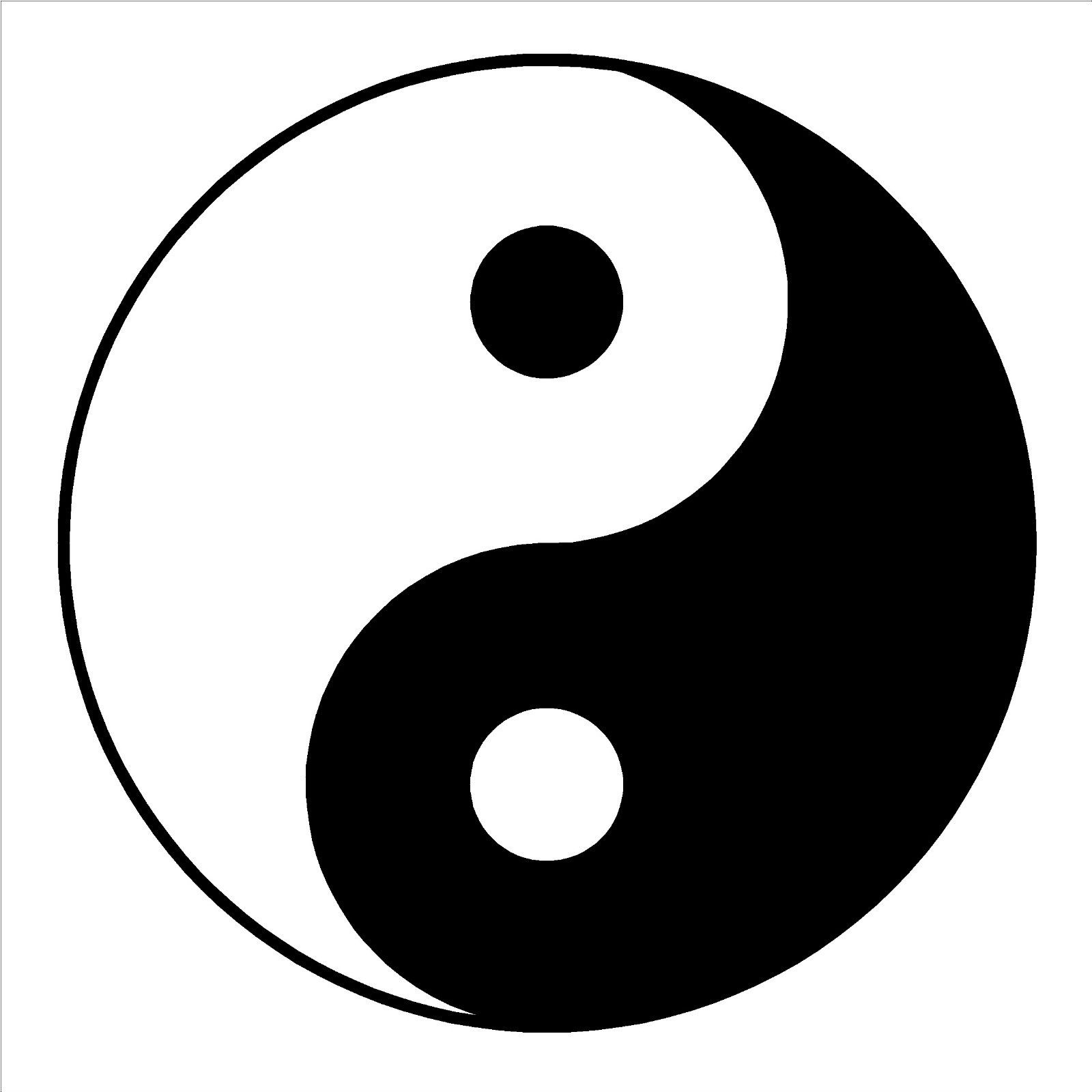

The principle of Yin and Yang is that all things exist as inseparable and contradictory opposites. Each half is split, not by a straight line, but by a perfectly even concave parabolic "S" curve. Various combinations of yin and yang lines led to the creation of 64 hexagrams. In I Ching, yin and yang are each represented by three horizontal lines: yin's lines are broken, and yang's are solid. I Ching can be used for divination, where different hexagrams and sequences have different meanings. Yin and yang are also present in the five elements of Chinese philosophy: wood, fire, earth, metal, and water. All of these things cannot exist without opposition. Yin-yang is present day and night, hot and cold, fire and water. These two forces are in constant opposition, but they also need each other to maintain a dynamic balance. Yin and yang are in everything that makes up the universe, including the sun (yang aspect) and the moon (yin aspect). Within yin, there is a bit of yang, and within yang, there is a bit of yin. Yin and yang are always in a state of flux, constantly moving and changing. Taijitu is also a representation of the way that yin and yang interact with each other. The top half is white and represents yang, while the bottom half is black and represents yin. The Taijitu symbolizes Yin-yang, also known as the "Yin and Yang Symbol" or the "Ultimate Symbol." The Taijitu is a circle divided into two halves by a curved line. When yang swells at the top of the circle, yin contracts, and when yin swells at the bottom of the circle, yang contracts. The "s curve" of the yin-yang symbolizes how yin and yang's complementary forces are inter-connected and continuously "ebbing and flowing" into one another. Yin and yang (or 陰 and 陽 in traditional Chinese characters) is a reminder that nothing in life is ever truly black or white, and there will always be a gray area. We all have a light side and a dark side, and it's important to find a way to balance both. Yin-yang is also a metaphor for the different aspects of our personalities. The Yin and Yang symbol reminds us that everything in life contains two opposites, and to maintain balance, we need to find a way to work harmoniously with both sides. What is the Meaning of the Yin Yang Symbol? Yin refers to "a closed door, darkness and the south bank of a river and the north side (or shady side) of a mountain," and yang refers to "height, brightness and the south side (or sunny side) of a mountain." The two are said to proceed from the Great Ultimate (taiji), influencing the process of the universe and all that is in it. Yin symbolizes the dark, passive, feminine force, while yang symbolizes the light, active, masculine energy. The symbol derives from Taoism, based on the belief that everything in the universe contains two forces: yin and yang. The significance of yin-yang through the centuries informs every aspect of Chinese cosmology, astrology, divination, medicine, art, and government. Yin and yang symbols are two halves that together complete wholeness. The origins of yin and yang trace back to ancient Chinese philosophy.


 0 kommentar(er)
0 kommentar(er)
